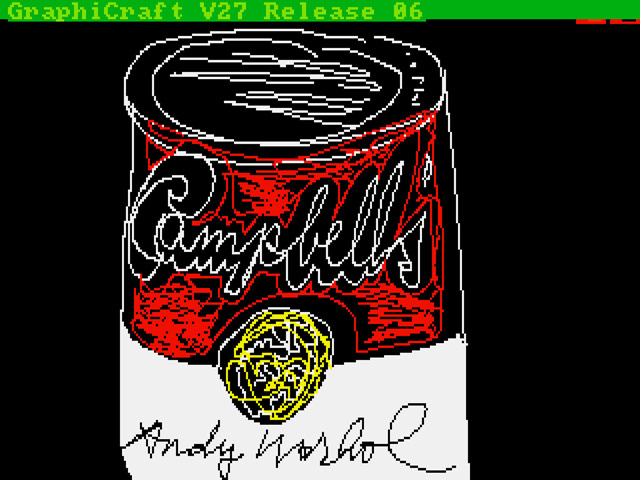Warhol’s Amiga art

In the 1980s, when personal computers with graphics capabilities were first introduced, Andy Warhol was an enthusiastic early adopter. In 1985, Commodore commissioned the artist to produce some art on their Amiga computer, but the work was never widely shown and was assumed lost. Then artist and retro computer nerd Cory Arcangel learned of Warhol’s Amiga experiments from this video (and perhaps this article from a 1986 issue of Amigaworld) and set in motion the process of finding out if any of the computers or storage devices in The Andy Warhol Museum contained his Amiga art.
CMU Computer Club members determined that even reading the data from the diskettes entailed significant risk to the contents, and would require unusual tools and methodologies. By February 2013, in collaboration with collections manager Amber Morgan and other AWM personnel, the Club had completed a plan for handling the delicate disk media, and gathered at The Andy Warhol Museum to see if any data could be extracted. The Computer Club set up a cart of exotic gear, while a video crew from the Hillman Photography Initiative, under the direction of Kukielski, followed their progress.
It was not known in advance whether any of Warhol’s imagery existed on the floppy disks-nearly all of which were system and application diskettes onto which, the team later discovered, Warhol had saved his own data. Reviewing the disks’ directory listings, the team’s initial excitement on seeing promising filenames like “campbells.pic” and “marilyn1.pic” quickly turned to dismay, when it emerged that the files were stored in a completely unknown file format, unrecognized by any utility. Soon afterwards, however, the Club’s forensics experts had reverse-engineered the unfamiliar format, unveiling 28 never-before-seen digital images that were judged to be in Warhol’s style by the AWM’s experts. At least eleven of these images featured Warhol’s signature.
Incredible.





Stay Connected